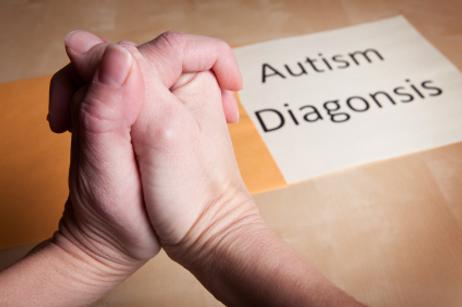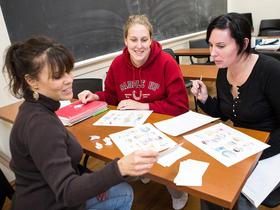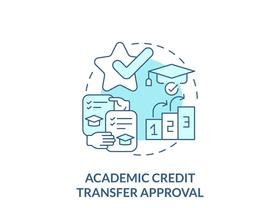Community colleges were intended to help all students access higher education, regardless of socioeconomic or geographical constraints. Subsequently, some community colleges have adjusted their admission policies, allowing undocumented immigrants to enroll on campus.
Learn all about community college and whether it is the right choice for your academic career. We'll cover the history of community colleges, the latest trends and issues, and the top degree-producing schools. Find out why students are turning to community colleges, see what issues affect campuses with such a diverse student body, and get information on the latest trends in degree offerings.
View the most popular articles in Why Community College:
Should Community Colleges Allow Undocumented Immigrants to Enroll?

Stuck on a Waiting List? How Community College Students Can Combat College Admission Freezes

Historically, when the economy sputters, community college enrollment rates rise. In facing today’s growing student population, some campuses are struggling under the increased demand. As a result, some community college students have been forced to halt their academic pursuits, finding themselves placed on waiting lists.
Waitlists, which put students in a “line” of acceptance after a school or program’s maximum capacity has been reached, can delay a student’s pursuit of a certification or degree for multiple semesters.
Will the Failing Auto Industry Drive Up Community College Enrollment Rates?

While the United States has more than six million students enrolled at 1,000 community college campuses nationwide, only half a million students graduate from these institutions each year. According to President Obama, this low graduation rate must change in order for our country to prepare for a stronger and more fertile economy.
In specifically examining the troubling economic setbacks experienced by residents of Michigan, Obama asserts that many unemployed auto workers must actively pursue community college programs to gain new education and training for the future job openings that will arise. In light of PresidentObama's direct visit with Michigan's current and former auto workers, many residents are wondering if the failure of their auto industry will ultimately help drive up their community college enrollment rates.
The impact of Michigan's auto industry on community colleges.
As Yahoo News reports, President Obama's mid-July visit to Detroit was intended to help the city and surrounding areas face their current economic challenges with new vigor. Considering that Ford, GM, and Chrysler are all based out of Michigan, their recent financial struggles have contributed to a waterfall of job losses and salary cuts statewide.
During his visit, President Obama sympathized with residents while simultaneously attempted to boost morale with his $12 billion dollar proposal. With this proposal, President Obama hopes to increase the enrollment rates at community colleges, both in Michigan and across the country, to eventually create a more qualified workforce.
In looking forward to the economic perks
How Will the New GI Bill Impact Your Community College Enrollment Options?

The GI Bill has provided many opportunities for soldiers and veterans to further their educational opportunities. In fact, according to the US Department of Veterans Affairs, the GI Bill is one of the most “significant pieces of legislation ever produced by the federal government.”
Like any other piece of legislation, the GI Bill is impacted by the country's economic, political, and social climates, and subsequently, it has recently undergone remarkable changes and revisions. Today, veterans seeking to attend courses at their local community college may find that their benefits have significantly changed.
This video explains the GI Bill benefits.
The Evolution of the GI Bill and its Recent Revisions
Created in 1944, the GI Bill (more formally known as the GI Bill of Rights) has been a heated topic of debate and discussion since its inception. Initially, the plan for the GI Bill involved paying veterans a sum of $20 per week; however, this stimulated controversy, as opponents argued that paying veterans decreased their incentive to work and find jobs.
In addition, there were provisions for educational opportunities for veterans. However, colleges during the 1940s were still seen as institutions reserved only for the privileged and elite, which added more fuel to the opponents' fires; protesters argued that “battle-hardened veterans” would struggle to conform with high college standards.
Yet, despite these arguments, the Bill was eventually passed, while the Veterans Administration (VA) was subsequently
Which Community College is Best for Students with Autism Spectrum Disorder?

According to Autism Speaks, a national society devoted to serving the autistic population and family members, 1 out of every 150 children is diagnosed with Autism Spectrum Disorder (ASD). ASD is a learning disability that typically involves a child’s struggle to socially, emotionally, and personally interact with others. Autistic children tend to show an unawareness of others’ feelings, facial recognition, and social cues.
Despite these struggles, however, ASD students are commonly intellectually exceptional. Autism Spectrum Disorder is described as a “spectrum” because the symptoms of each child can vary significantly. Those with strong signs of Autism are generally labeled as having “Classic Autism,” while individuals with fewer signs of autism may be labeled as having “Asperger’s Syndrome.”
The National Autism Association defines autism as follows:
Autism is a neurodevelopmental disorder characterized by:
- social impairments
- cognitive impairments
- communication difficulties
- repetitive behaviors
According to Autism Speaks, “Compared with classic autism, children with Asperger's Syndrome usually don't show any signs of major cognitive difficulties — their IQ falls in the normal or even superior range.” Similarly, children who are diagnosed with Classic Autism may have more noticeable signs but are often able to exceed their peers’ standard intellectual and cognitive abilities.
High school students or adults who are diagnosed with Autism Spectrum Disorder can be confident that community colleges across the country have various programs for individualized support. As Autism is, by far, the fastest-growing serious developmental disorder in the United States, community college leaders are ardently seeking
Recent Articles























